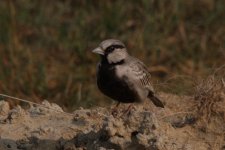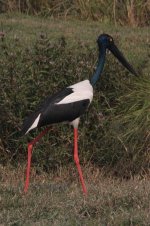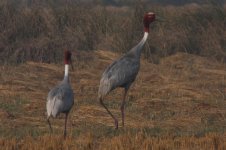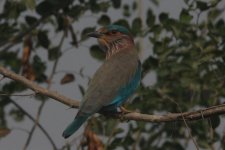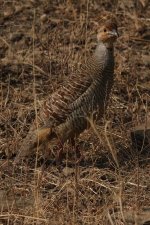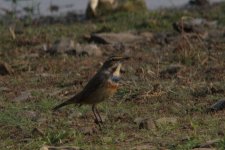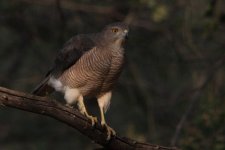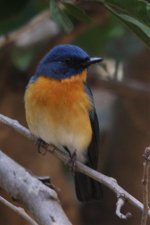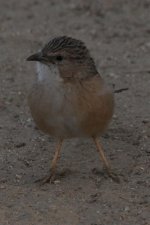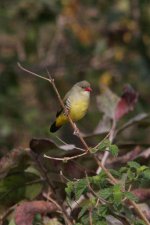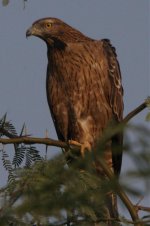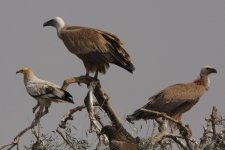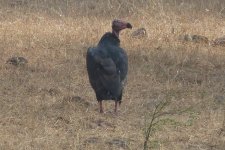This was a cultural and nature tour around Rajasthan arranged by Indian Panorama www.indianpanorama.in
Chambal Safari Lodge.
This lodge is about a 5 hour drive from Delhi.
Very nice rooms and food. However food and drink are very expensive by Indian standards. Lunch and dinner were £10 each, Beer £5 G&T £5. We did find out further into the trip that these prices are not unusual in Rajasthan!
It was interesting walking around the grounds with Palm Civet, Nilgai, Brown Hawk Owl, Spotted Owlet, Jungle Babbler, Red breasted Flycatcher and Shikra all seen.
The Chambal River trip was very good with many Gharial and Mugger crocodiles. Also Bar-headed Geese, Ruddy Shelduck, 4 Egyptian Vultures, Black Ibis, Great Thick knee, Blue Rock Thrush, Pallas’s Gull, Pied Kingfisher and Grey Francolin.
Indian Skimmers had not yet arrived, which was disappointing.
We went to the Sarus Crane Wetlands. There were many Sarus Cranes, Black-necked Storks, Woolly necked Storks and Painted Storks, also Indian Swamphen, Ashy crowned Sparrowlark, Citrine Wagtail, Indian Roller and Rufous tailed Shrike.
Keoladeo Ghana, Bharatpur.
We stayed at Birder’s Inn, about 200 metres from the park gate, which can be recommended. Cycle Rickshaws are available outside the hotel at 100 rupees per person per hour. They will hold two comfortably.
Entrance fee to the park is 500 rupees.
Our guide, Babu, showed us around and all the usual birds were present. Highlights were Greater Spotted Eagle, Crested Serpent Eagle, Dusky Eagle Owl, Spotted Owlet, Scops Owl, White eared Bulbul, Sarus Crane and Yellow footed Green Pigeon.
We made 2 visits and recommend the early morning one as the afternoons are very busy with non birding Domestic tourists.
Chambal Safari Lodge.
This lodge is about a 5 hour drive from Delhi.
Very nice rooms and food. However food and drink are very expensive by Indian standards. Lunch and dinner were £10 each, Beer £5 G&T £5. We did find out further into the trip that these prices are not unusual in Rajasthan!
It was interesting walking around the grounds with Palm Civet, Nilgai, Brown Hawk Owl, Spotted Owlet, Jungle Babbler, Red breasted Flycatcher and Shikra all seen.
The Chambal River trip was very good with many Gharial and Mugger crocodiles. Also Bar-headed Geese, Ruddy Shelduck, 4 Egyptian Vultures, Black Ibis, Great Thick knee, Blue Rock Thrush, Pallas’s Gull, Pied Kingfisher and Grey Francolin.
Indian Skimmers had not yet arrived, which was disappointing.
We went to the Sarus Crane Wetlands. There were many Sarus Cranes, Black-necked Storks, Woolly necked Storks and Painted Storks, also Indian Swamphen, Ashy crowned Sparrowlark, Citrine Wagtail, Indian Roller and Rufous tailed Shrike.
Keoladeo Ghana, Bharatpur.
We stayed at Birder’s Inn, about 200 metres from the park gate, which can be recommended. Cycle Rickshaws are available outside the hotel at 100 rupees per person per hour. They will hold two comfortably.
Entrance fee to the park is 500 rupees.
Our guide, Babu, showed us around and all the usual birds were present. Highlights were Greater Spotted Eagle, Crested Serpent Eagle, Dusky Eagle Owl, Spotted Owlet, Scops Owl, White eared Bulbul, Sarus Crane and Yellow footed Green Pigeon.
We made 2 visits and recommend the early morning one as the afternoons are very busy with non birding Domestic tourists.




